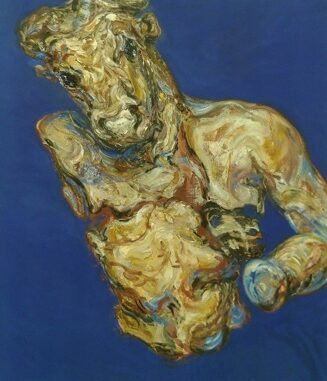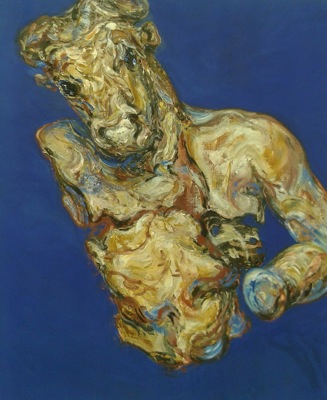
CLASSICICITY allows us to think and rethink our perceptions of art. By combining contemporary interpretations and reflections of Greek and Roman antiquities alongside individual ancient pieces, the pedestal on which these are frequently placed, both literally and metaphorically, is removed. This thereby provides us with the opportunity to reassess some of the world’s most treasured historical artefacts.
The concept behind the CLASSICICITY exhibition at Breese Little Gallery came from the two curators, Ruth Allen and James Cahill. Both are PhD researchers at the University of Cambridge. Ruth specialises in Roman art history and visual culture while James’s focus is on the relationship between Greco-Roman art and mythology and contemporary visual culture.
Together, the curators have gathered some of the leading contemporary and emerging artists who have responded on multiple levels to the classical world and the current environment. Ruth and James have been extremely fortunate to have had the support of Rupert Wace who supplied the Greek and Roman Antiquities.
By combining the ancient with the contemporary, the awe factor that can get in the way of viewing works which are normally in museums, is removed. It allows each piece to be seen as art and read and engaged with in a different way. The contemporary art assists in opening up the discussion. Each artist has responded in various ways and we are reminded that the antiquities were a reflection of their time and culture also.

Minotaur by Maggi Hambling
Names such as Sarah Lucas presenting Penetralia – a plaster and wood sculpture with references to the body and sex and Maggi Hambling’s impasto oil on canvas, Minotaur, which refers to Myths as well as her experiences in Barcelona, exhibit alongside a 2nd century carved head of Mars and 450 BC terracotta pot depicting contemporary life. Humour and a playful nature allow the viewer to feel more at ease, the seriousness which can surround art and antiquities is temporarily side-stepped. The displacement of the antiquities dispel their original purpose and allow the viewer to focus on them as individual pieces.
The exhibition, although small, is extremely complex and layered. A neon pink and yellow triptych Brutus and the Maximum Phallus by Nell Allen is flagrantly crude. Depicting a flabby and grotesque, yet comic, Cupid in sexual arousal initially feels out of place alongside the rest of the exhibits. However, the Romans were portraying sexuality in a variety of forms and this piece forces us into making us question our perceptions of sex, love, our bodies and what we consider art or even acceptable in art. The shocking nature of the triptych is accentuated by its overt boldness of colours and forms to make us initially recoil. But is it so different from ancient scenes of bestiality or debauchery? Maybe we find ourselves blinkered by the name of the creator or the period it was made or even by the place in which it is exhibited. This is definitely one where you leave the space and feel you need to turn around, revisit and re-examine. The antiquities and contemporary art standalone yet together, in their seemingly jarring and contrasting nature, they complement each other, working together to debate art and its histories.
On 1st April the exhibition builds to a crescendo before its finale the following day. A talk by the curators is being offered and will take place from 7 pm. For more information please contact the gallery.
The show is open until 2nd April 2015 at Breese Little, Ground Floor Gallery, 30b Great Sutton Street, London, EC1V 0DU.
Open: Wed – Fri 12 – 6 pm and Sat 12 – 4 pm.
By Helen Shewry

Leave a Reply